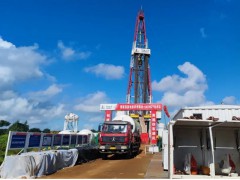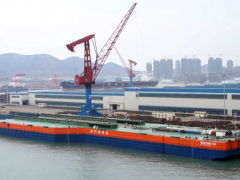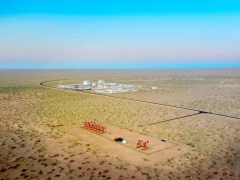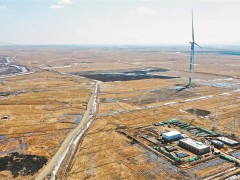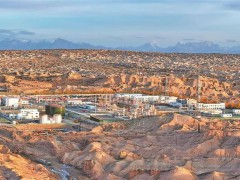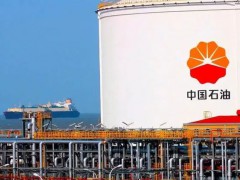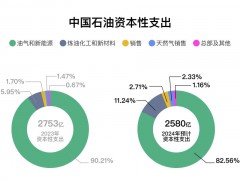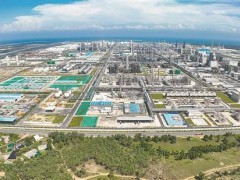据油价网6月26日报道,油价上涨和资本支出规定正在为今年全球勘探和生产公司创纪录的最高自由现金流奠定基础。而美国页岩公司——将产生 600 亿美元的自由现金流——准备在全球上游业务创纪录的自由现金流中发挥关键作用。独立研究公司雷斯塔能源(Rystad Energy) 在一份新报告中表示,美国页岩地区预计将成为资本支出规定和高油价的最大受益者,也是全球上游业务有史以来最高自由现金流的最大贡献者。
70美元的油价当然会有很大帮助,但也是每一家石油公司的资本规定——从石油巨头到美国独立石油公司——促成了今年创纪录的现金流。
今年自由现金流将达到创纪录的3480亿美元
今年全球上市石油公司的总自由现金流量(不包括融资或对冲效应的上游活动产生的所有现金流量)将飙升至创纪录的3480亿美元。根据雷斯塔能源的估计,这将比2008年创下的3110亿美元的历史高点高出370亿美元。当时,就在金融危机爆发前,当年的平均油价为每桶100美元。
据雷斯塔能源预测,创纪录现金流的关键驱动力将是美国页岩地区,据估计,在对冲效应出现之前,该地区将获得近600亿美元的自由现金流。
这将是美国页岩钻探商财务状况的一次大逆转,自页岩革命开始以来,美国页岩钻探商十年来一直在努力创造正的自由现金流。
“页岩新时代”的曙光
据彭博情报(Bloomberg Intelligence)估计,由于严格的资本支出和较高的油价,2021年美国页岩生产商预计将产生总计300亿美元的自由现金流。这与过去的繁荣和萧条周期截然不同,当时美国页岩气区块为了开采和生产尽可能多的石油而负债累累,导致油价下跌。
然而,今年可能成为分析师们开始称之为美国页岩“新时代”的开始,在这个新时代,股东回报和偿还债务将优先于产量增长和创纪录的产量。
根据德勤(Deloitte)去年的估计,自页岩首次繁荣以来的15年里,美国页岩行业损失了3000亿美元的净负现金流,而今年预计从自由现金流中获得的意外收入仅为这一损失的十分之一。
尽管如此,对今年自由现金流的预期让分析师们乐观地认为,页岩区块正处于转折点,至少还会再维持一到两年。
据雷斯塔能源称,预计2021年页岩的自由现金流将超过深水区和浅水区的自由现金流。
这家情报公司表示,传统的陆上供应部门将获得最大的自由现金流份额,达到 1600 亿美元,但这仍低于这些上游活动在2011年创下的纪录。
为超额利润做好准备的石油公司
由于油价上涨、全球需求上升和市场趋紧,所有上市上游公司今年的总收入将比去年增长55%,或近5000亿美元。据雷斯塔能源估计,考虑到全球上市勘探开发公司今年的支出水平只会增加2%——得益于各公司仍然严格的资本约束规定——生产商的利润将大幅提高。
雷斯塔能源上游研究主管 Espen Erlingsen表示,在新冠疫情的最初冲击之后,石油需求逐渐增加,欧佩克 + 继续抑制市场的交易量。美国致密油活动缓慢增加进一步支撑了随之而来的高价走势。 加上持续的低投资环境,勘探与生产公司正享受超额利润。
例如,由于油价大幅上涨,今年第一季度,能源超级巨头的收入几乎回到了疫情爆发前的水平。据分析师表示,随着本季度油价上涨,收益有望进一步上升。
伍德麦肯兹(Wood Mackenzie)今年初表示,如果原油均价为每桶55美元,油价上涨、保守支出以及去年大幅削减成本的好处将为今年大型石油公司创造创纪录的现金流创造条件。
考虑到投行和预测机构目前预测今年油价平均至少为每桶65美元,而且越来越多的大型石油公司分析师和高管预测不排除在未来几个季度油价将短暂飙升至每桶100美元的可能,这一预测甚至可能变得相当保守。
包括页岩地区在内的E&P公司的当务之急是利用预期的超利润,创纪录现金流来偿还债务和回报股东。资本控制今年可能会持续,但如果世界要避免在几年内陷入供应赤字,上游投资将需要增加。
郝芬 译自 油价网
原文如下:
Dawn Of A New Era For U.S. Shale
Higher oil prices and capital expenditure discipline are setting the stage for the highest free cash flow on record for the world’s exploration and production companies this year. And U.S. shale firms—set to generate $60 billion free cash flow—are primed for playing a key role in the record-breaking free cash flow from global upstream operations. The U.S. shale patch is expected to be the biggest beneficiary of capex discipline and high oil prices, as well as the largest contributor to the highest-ever free cash flows from the upstream business globally, independent research firm Rystad Energy said in a new report.
$70 oil can certainly help a lot, but it is also capital discipline at every single oil company—from supermajors to U.S. independents—that is contributing to record cash flows this year.
Free Cash Flow Set To Hit Record-Breaking $348 Billion in 2021
The world’s public oil firms are set to see their combined free cash flow—all cash flows from upstream activity excluding such from financing or hedging effects—surge to a record-breaking $348 billion in 2021. According to estimates from Rystad Energy, this would be $37 billion higher than the previous all-time high of $311 billion, which was generated in 2008. Back then, just before the financial crisis, oil prices averaged $100 a barrel that year.
The key driver of record cash flows would be the U.S. shale patch, which is estimated to rake in nearly $60 billion in free cash flow before hedging effects, Rystad Energy forecasts.
This would be quite a U-turn in the financial fortunes of U.S. shale drillers, which have struggled to generate positive free cash flow for a decade since the shale revolution began.
The Dawn of ‘New Shale Era’
According to Bloomberg Intelligence estimates, U.S. shale producers are expected to generate a combined $30 billion in free cash flow in 2021 amid disciplined capital spending and higher oil prices. That’s so different from the past boom and bust cycles where the U.S. shale patch loaded up on debt to drill and produce as much oil as possible, contributing to sinking oil prices.
This year, however, could turn out to be the beginning of what analysts have started to call “a new era” for U.S. shale, where returns to shareholders and paying down debts take precedence over production growth and record output.
The expected windfall from free cash flow this year is just one-tenth of the $300 billion in net negative cash flow the U.S. shale industry has lost in the 15 years since the first shale boom, per Deloitte estimates from last year.
Nevertheless, the expectations of free cash flow this year make analysts optimistic that the shale patch is at a turning point and will keep discipline for at least another year or two.
According to Rystad Energy, shale’s free cash flow in 2021 is expected to exceed the free cash flows from both the deepwater and shallow water segments.
The conventional onshore supply segment will earn the biggest share of free cash flow, at $160 billion, but this will still be lower than the record from these upstream activities set in 2011, the intelligence company said.
Oil Firms Primed For Super-Profits
Gross revenues at all public upstream firms are set to surge by 55 percent, or by nearly $500 billion, this year compared to last year, thanks to higher oil prices, rising global demand, and a tighter market. Considering that spending levels of listed E&P firms globally are set for just a 2-percent increase this year—courtesy of still strong capital discipline across the board—producers are set for materially higher profits, Rystad Energy reckons.
“Oil demand has gradually increased after the initial shock of the Covid-19 pandemic, and OPEC+ continues to hold back volumes from the market. The consequent high price movement has been further supported by a slow ramp-up in US tight oil activity. In conjunction with the persisting low investment environment, E&Ps are enjoying super-profits,” Espen Erlingsen, head of upstream research at Rystad Energy, said.
Income at the supermajors, for example, nearly returned to pre-pandemic levels in the first quarter of this year, thanks to dramatically higher oil prices. Further upsides in earnings are on the horizon with this quarter’s oil price rally, analysts say.
Higher oil prices, conservative spending, and the benefits of the massive cost cuts from last year are setting the stage for record cash flows at Big Oil this year if the price of oil averages $55 per barrel, Wood Mackenzie said at the start of this year.
This forecast could even turn out to be quite conservative, considering that investment banks and forecasters now see oil prices averaging at least $65 a barrel this year, and a growing number of analysts and top executives at Big Oil aren’t ruling out a brief spike to $100 per barrel in coming quarters.
The immediate priority for E&P firms, including in the shale patch, will be to use the expected super-profits and record cash flows to pay down debts and reward shareholders. Capital discipline will likely hold this year, but upstream investment will need to rise if the world is to avoid sleepwalking into a supply deficit within a few years.
免责声明:本网转载自其它媒体的文章,目的在于弘扬石化精神,传递更多石化信息,并不代表本网赞同其观点和对其真实性负责,在此我们谨向原作者和原媒体致以敬意。如果您认为本站文章侵犯了您的版权,请与我们联系,我们将第一时间删除。



